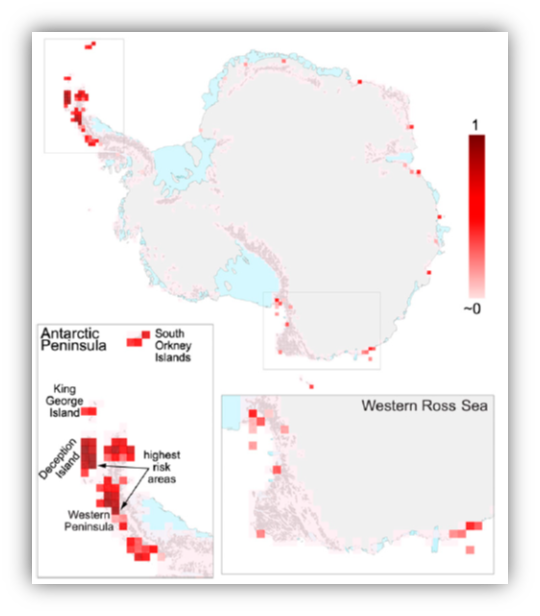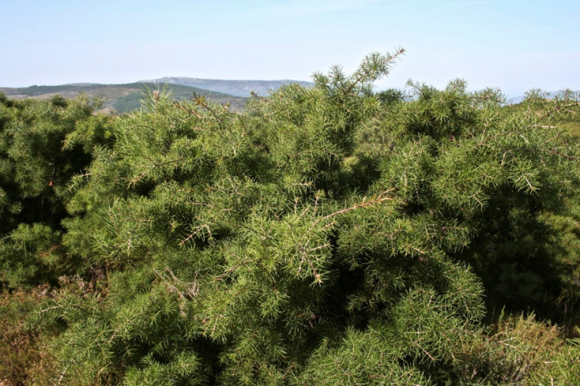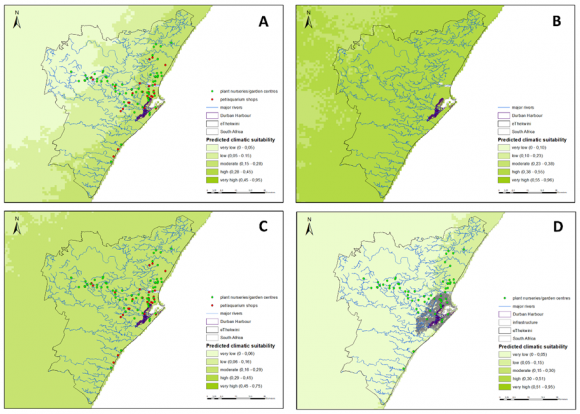20 March 2012 | By Prof. Steven Chown
Antarctica is regarded as one of the most pristine environments on Earth. There is, however, a growing concern that the icy continent is being threatened by alien species that are accidentally being brought to the continent in the luggage of tourists and scientists. Changing climates are making matters worse, making it easier for these alien species to establish, to become invasive, and ultimately threaten the continent’s fragile biodiversity.
A better understanding of the mechanisms at play during the dispersal and establishment of alien species is important for managing the risks posed by these alien species. While most broad-scale assessments of biological invasions focus on intentionally introduced species, the initial phases of biological invasion of accidental introduced species are often overlooked and remains poorly understood.
To this end, in a recent paper in the leading scientific journal Proceedings of the National Academy of Sciences of the United States of America, C·I·B researcher, Professor Steven Chown, and colleagues undertook a comprehensive, continent-wide evaluation of the risk posed to Antarctica by alien species. The study, which was a consortium effort of the International Polar Year (IYP) Aliens in Antarctica project, aimed to calculate the chances of the different parts of the continent being invaded by flowering plants that are foreign to its soils.

In practical terms about 2% of the 33 054 tourists and 7 085 scientific team members who visited Antarctica during the first summer season of the 2007-2008 International Polar Year were sampled and asked questions about their previous travel. Results indicated that tourists and ships’ crews are less likely to transport propagules (seeds) to the region compared to scientists, science support personnel, and tourist support personnel. For those visitors carrying seeds the number per visitor averages 9.5 seeds per person. Using vacuum cleaners, the research team collected almost 2 686 seeds from equipment including outerwear, footwear, backpacks, and camera bags. About 20% of tourists had unintentionally carried seeds to Antarctica while more than 50% of field researchers tended to carry propagules to the region. Overall, the research team estimated that all visitors to the region that season brought about 71 000 seeds. Approximately 31 732 seeds entered Antarctica on tourists and 38 897 seeds on scientists.
From combined data of the proportion of visitors per category carrying propagules, the numbers of propagules per individual, and visitor landings, it was determined that the probability of propagule transport to the region is highest for the Western Antarctic Peninsula coast, followed by the western Ross Sea region and then by several sites in East Antarctica. Analyses of the types of seeds gathered, together with information from the survey questionnaires about the visitors’ travel habits, suggest that between 49-61% of the seeds reaching Antarctica are from areas with similarly cold climates, and therefore pose a threat of by being able to survive the cold conditions. Many of the seeds collected are also from plant families that are known to already have invaded cold-climate regions in the Arctic and sub-Antarctic.
A risk index, based on propagule pressure and origins, and climatic suitability of the ice-free areas of the continent, indicated that alien species establishment is currently most likely for the Antarctic Peninsula coast and the islands off the coast of the Peninsula (Figure 1). Recent founder populations of several alien species in this area confirm these findings. For example, the invasive grass species Poa annua is one of the true pioneers among them and has already spread from outlying islands to several stations in the Antarctica Peninsula.
Cumulative degree days (a measure of growing season length) across ice-free Antarctica was calculated by using climates forecast for the year 2100 suggested an increase in annual cumulative degree days, on ice-free areas of Antarctica, indicating that the risk of alien species establishment continues to be highest along the Antarctic Peninsula. The risk of alien species establishment will also rise substantially in the coastal, ice-free areas of the western Ross Sea area and in parts of coastal East Antarctica.
“With climate change, areas such as the Antarctic Peninsula, Ross Sea and the East Antarctic coastal regions will become high-risk areas because it is easier for plants to survive and establish on ice-free ground in these sectors,” Prof. Chown noted. “By keeping current climate data and climate change forecasts in mind, our analyses reveal that the likelihood is high that many foreign species will be able to establish and become invasive, both now and within the next 100 years,” Prof. Chown says of the projections that were made based on possible scenarios provided by the Intergovernmental Panel on Climate Change (IPCC).
Read the paper: Chown et al. (2012) Continent-wide risk assessment for the establishment of nonindigenous species in Antarctica



